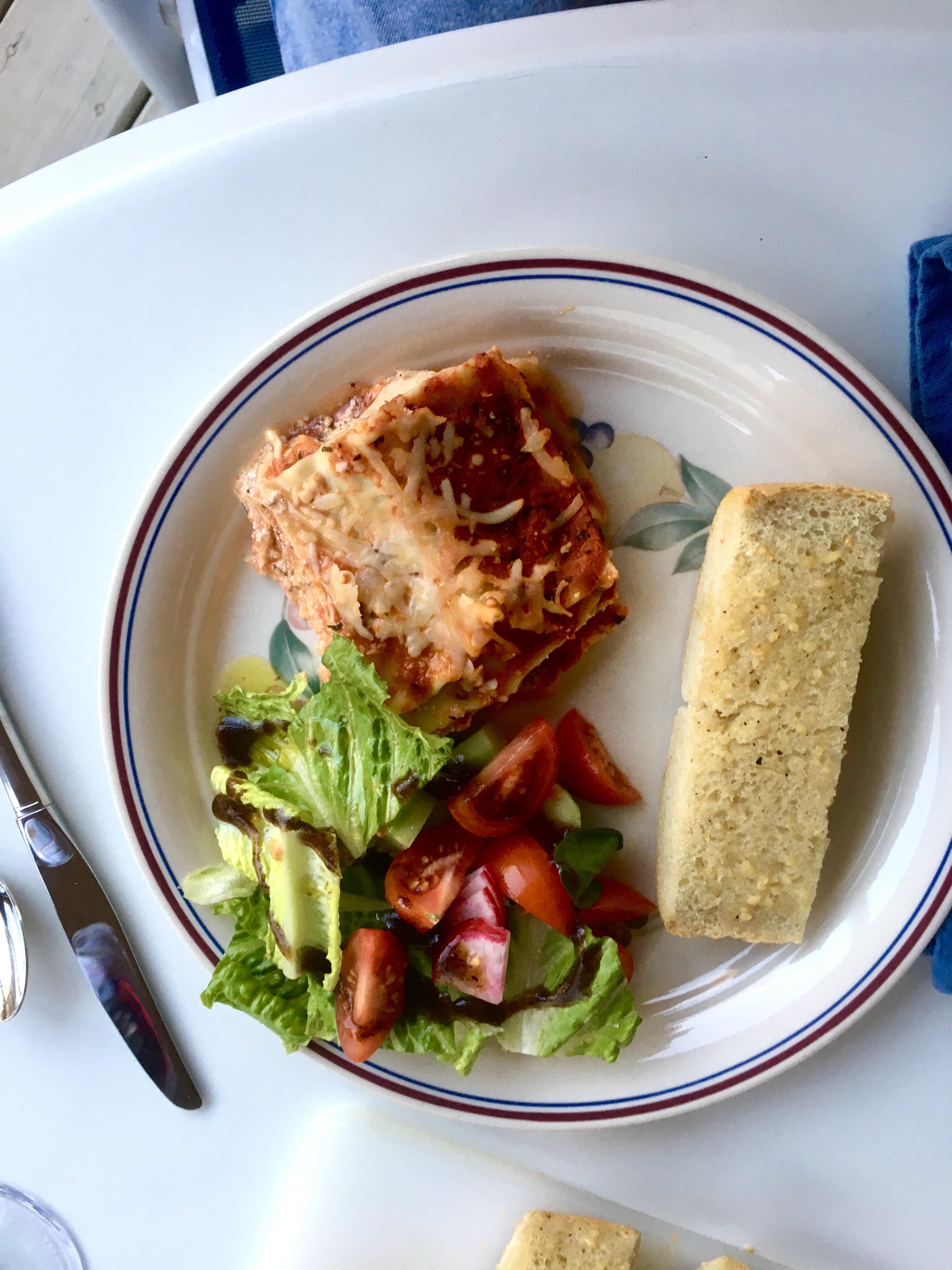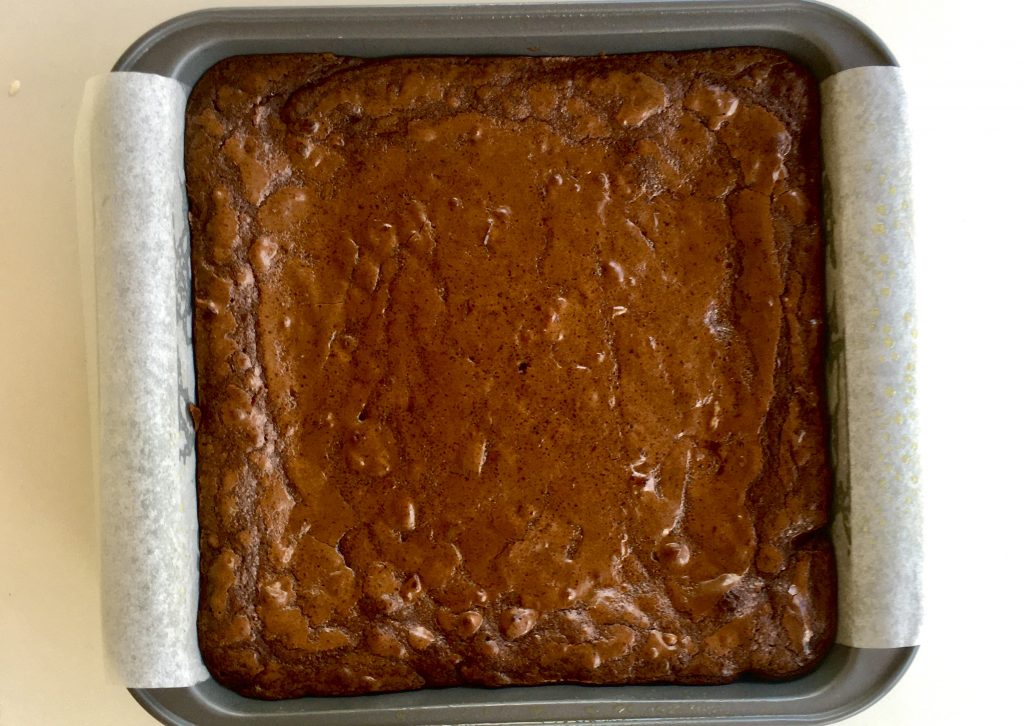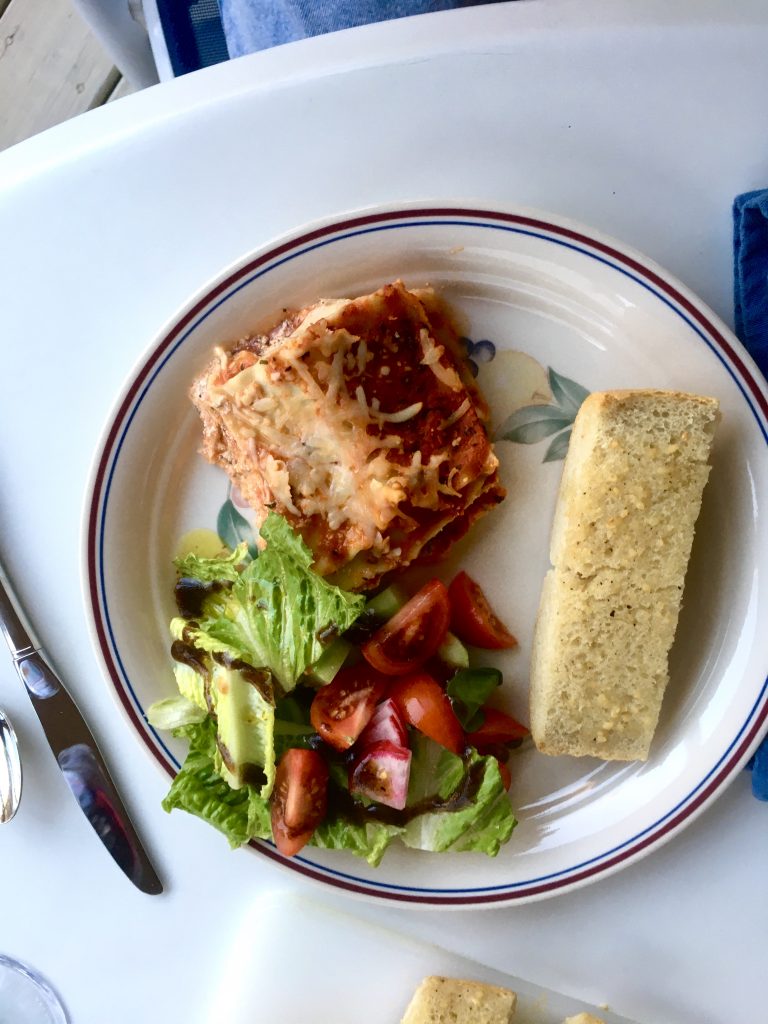A lot of us have been cooking and baking up a storm during this physically distanced time, channeling existential anxiety into tangible steps and processes into which we can knead out our energy and feel gratified at creating something out of nothing when the inverse action has swept through to alter our lives. For me, at least, it has not been so much about craving a carrot cake, being unable to pick one up from my favorite cake shop, and resorting to making one myself. It has been (and typically is in Normal Life as well, to be honest) about the act of creation.
But the second part, the other big reason I love to bake and cook, that tends to come from that act of creation is the sharing of what is made with another. In a way this explains my equal passions for theatre and cooking. I relish the process of building a show, the collaboration of artists in a rehearsal room to create something out of thin air. But that product means little without an audience to share it with. An audience to interpret the work in their own way, to talk with after, to review in their newspapers and blogs. In my opinion, good theatre, gratifying theatre, is a conversation. And the same goes with food. Baking for oneself in a monologue is fine. We do what we must to do what we love. But part of the purpose gets lost. There is a magic in communing with other people around food. The expression of love in putting the time into crafting a meal that is nourishing and joyful and interesting. Then, to gather together and take the time to enjoy it together. To taste. To discuss our own experiences of that taste. To share that taste with new people and hear new perspectives.
So while quarantine cooking allows me to indulge in that first aspect ad infinitum, spending hours on end in the kitchen, the second part is on hold. And while my family of four does gather nightly for this communion (and in the dining room on Sundays to give time some meaning), that aspect of sharing with those I don’t spend every day with, those special dinner parties and get togethers, are missed.
But leave it to food writer, cook, and embodiment of good will Samin Nosratto create an answer to our food-communing problem. This past Sunday, in conjunction with NYT Cooking, Samin hosted a virtual dinner party. All across the world, people spent their day (or day before, or week…) prepping her recipe for The Big Lasagna(or your own lasagna recipe, or whatever you wanted to make…) to come together and have dinner at 7pm Eastern Time (4pm Pacific) with Samin live streaming and taking questions/comments over Instagram. And of course, if Samin Nosrat and lasagna are involved, I am there. So on Sunday, my family and many others prepped and participated in a virtual dinner party!
Now because we are the family we are, we had already made two lasagnas at the very beginning of all of this and put one in the freezer. So we didn’t make The Big Lasagna, or even make the lasagna fresh that day. But there was plenty activity in the kitchen besides a simple reheat. A few days before, my Mom had come across a recipe on Pinterest for a surprisingly quick and seemingly simple Italian loaf recipe that seemed to have the perfect makings to be a garlic bread vehicle. It also deployed the use of a pan of water in the oven to help create steam to form a crustier loaf, a technique I had been itching to try. And while the recipe was a little sparse on descriptors, weeks of frequent bread baking and months of sporadic experience helped my Mom and me along. We kept a close eye on our dough, watching for the desired smooth ball coming away from the edges of the bowl. Intermittently stopping the mixer to give the dough a feel, looking for the doughs slow rebound after giving it a press. After both indicators were present and it seemed as though we had formed enough gluten, we set it in the proving bin for a supposed 30-minute rise. I was very interested to see if our dough would truly double in size in only 30 minutes. Typically, this first rise takes an hour or two at least. But whether it was the touch of brown sugar in the dough helping feed the yeast, or the uniquely warm day we had, 30 minutes brought us a dough that was certainly doubled. And after quickly cutting and forming the pieces into loaves they doubled again just as quickly.
My continual downfall with bread rears its ugly head whenever I have to make slashes in a loaf. I theorize that our knives are just not as sharp as they should be, because rather than make a clean, deep cut to allow the bread to expand more in the oven, the paring knife always tends to drag through leaving me with a less than ideal, sloppy slash. While this hasn’t had an adverse effect on the taste or texture, these loaves never look as pretty as they could. Alas, so was the case with these otherwise perfect loaves. Aside from a streaky slit, though, they came out looking golden and feeling crusty just as promised. And when we cut one open to garlic bread it up, the texture was an ideal Italian loaf. Close in texture and sturdy enough to be ideal for future sandwich making ventures, but light and chewy and ideal for our garlic bread making as well. Another bread for the books!
But even while the bread was in the lower oven, the upper oven was preheating for oatmeal scotchiesbeing made by my Mom to go into care packages for family and friends. Because while dinner parties and casually bringing baked goods to the office are on hold, the care package is another way to participate in the magic of food communion long distance, and connect with loved ones in a non-digital, tangible way. And what better expression of love than scotchies? They’re a care package staple! And while I have made many myself, occasionally with the personal adjustment or alteration, the original family recipe made by my Mom is the essence of The Scotchie. And so the smell of bread was replaced with that scent of utter nostalgia as we worked the ovens like we were running a bakery.
What is a dinner party, though, without a dessert course for ourselves? Not a party I want to be hosting/attending, I’ll tell you that! And on that Sunday I had a particular dessert agenda. For the night before, tragedy had struck in that department. When I had asked on Saturday what baked good people were craving that weekend, my sister put in a request for brownies stemming from a NYC brownie related discussion a few days earlier. So brownies I made. And I pulled out all the stops. Toasted walnuts. Chopped chocolate mixed in to melt and make them extra fudgy. Espresso powder to up the chocolate intensity. But because of all the other activities of the day, I didn’t get to making them until after dinner. And being Alton Browniesat their core, they required a fair amount of time to cool to be able to cut them and get squares rather than gloppy blobs. So, in an effort to have brownies to eat before midnight, I had put them in the fridge once out of the pan and on a cutting board to help speed up the cooling process. An act I had done many times. Even balanced as precariously as I had that night. But when taking them out for what I expected to be a final check, tragedy struck. In a fatal combination of uneven weight distribution on the cutting board, ill-arranged beer bottles, and stacking on a box of tomatoes, the brownies fell to the floor, crumbling and splattering before me. I was a ball of crushed, frustrated, enraged, devastation. In this time when going to the store to quickly replenish is not an option, and ingredients can be tough to find, wasting them – especially after having spent time and effort crafting them for others – is an even greater blow than normal.
So on Sunday I was determined to achieve redemption. Before bread or scotchies even began their preparation, I put together the brownies that I was determined to make no less than perfect with plenty of time to cool safely on a rack at room temp. Walnuts and pecans were toasted. What I thought was our last chocolate bar but turned out to be only our second to last (small surprising joys!) was chopped and mixed. And a small bit, perhaps an eighth of a cup, of bread flour was subbed for some of the all-purpose in the original recipe. Why? My theory was that this substitution in addition to a longer than normal mixing time would provide extra gluten formation, yielding a chewier rather than cakier brownie. While this effect in texture would be desired, it is what seemed to follow suit from such a texture, that such chewier brownies tended to have that classic shiny brownie crust, was what I was really after. That was the one, cosmetic aspect always sadly missing from the otherwise perfect brownie recipe. If I could get that shine, I could finally make an almost-perfect brownie totally and utterly idyllic. Forty-five minutes later, not only did I have an 8×8 pan of redemption, but I had such shiny success. From a recipe that for years had failed to yield this one, classic element and tell-tale sign of delicious brownie-hood, I had manufactured it. My gluten education had served me well and delivered me redemption.
Before that, though, was the dinner party that made it all happen. With a lasagna lovingly reheated from being made weeks before in a flurry of the comfort of being safely home, a loaf of garlicy bread freshly baked and toasted, and a bottle of dry red wine, the family sat together on the porch in the unseasonably warm fresh air with Samin, and hundreds of others by proxy, on the iPad. We took pleasure in a dish that has long been the pinnacle of both comfort and celebration food for my family. We heard stories of other people cooking the same dish, listened to anecdotes of different types of cuisine about which we knew little, and felt the joy of another presence in the household breathing in a gust of fresh air. The four of us, who had spent every one of the past 54 days with each other, welcomed new guests around our table. And every one of us present had brought a dish to share. Far too big for any one of us, but perfectly sized for the occasion.
And while it cannot replace the energy and spirit gained from truly, physically gathering around a table together, the communion in knowing there were others who had taken the time to sit down and feed themselves at that same time was heartening. To think of all the lasagnas with all their own spins, with all their personal histories, with all the side dishes and desserts of origins joyous and determined, were happening that day because of one shared concept, felt like there was a greater connection being made. One that I, personally, have a difficult time cultivating over a Zoom or facetime. Because even though we were not all physically together, the force of food, the force of the act of creation, brought us together in that deeper, unplaceable sense. And for all the phone calls I’ve had, for all the texts I’ve sent, for all the neighbors I’ve waved at as I pass them on a walk, it’s this connection that has made me feel, for the first time during this physically distant time, really socially connected.
Have you been able to connect with others over a meal? Over a project? Over a united, long-distance task? Have you sent or received a care package? Let me know how food has been helping you stay connected.





